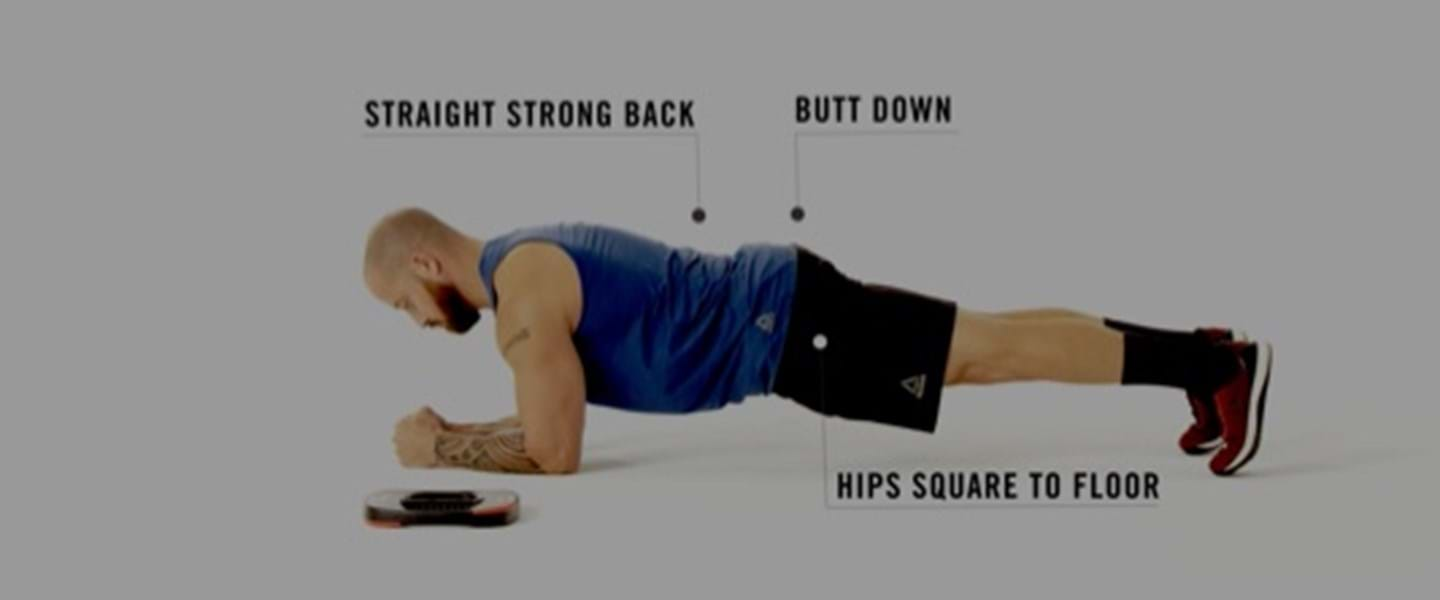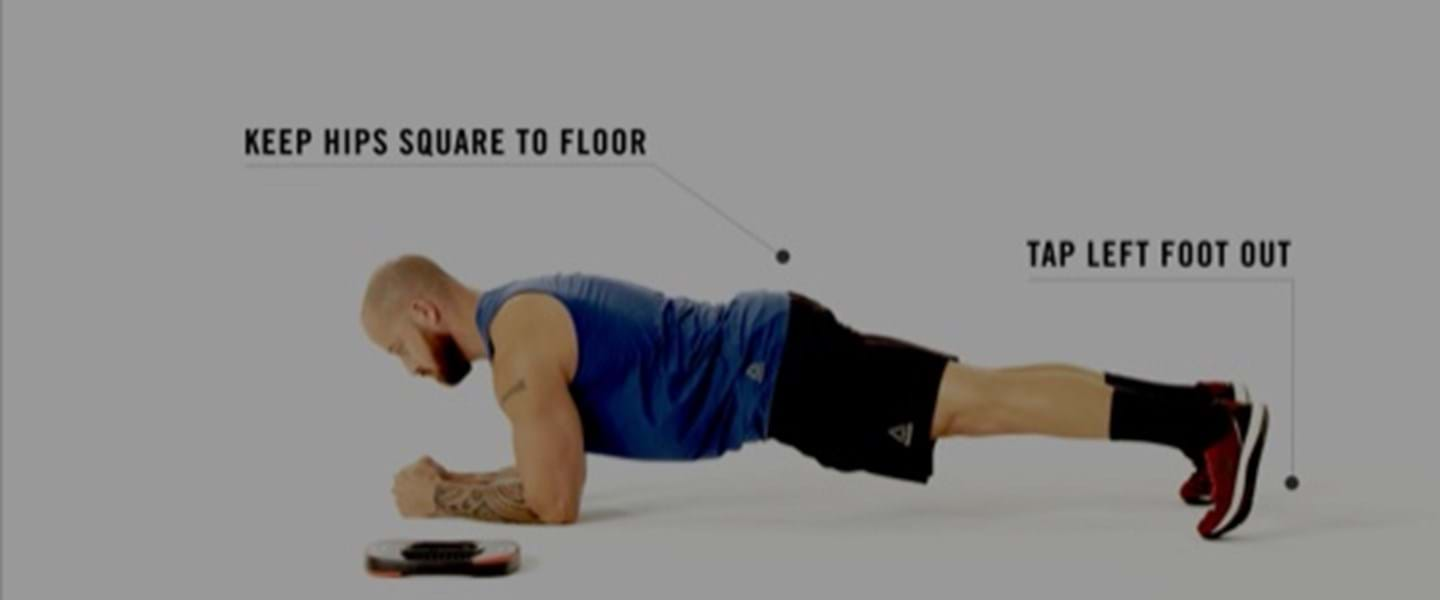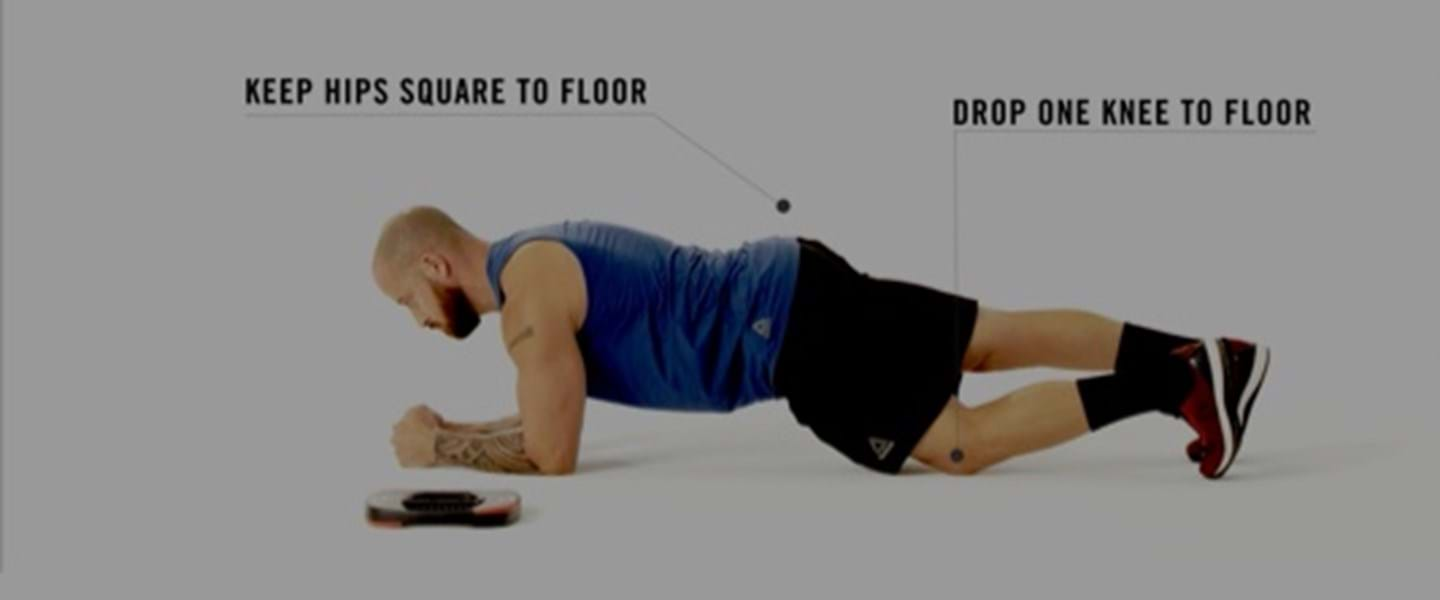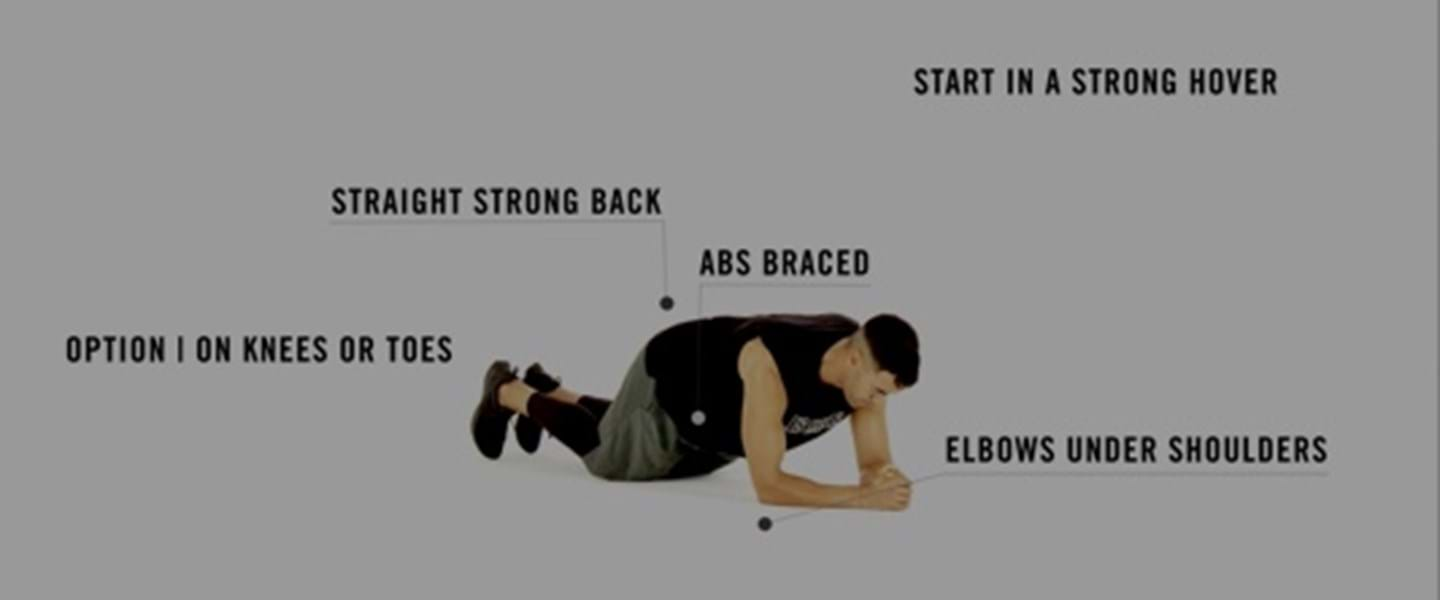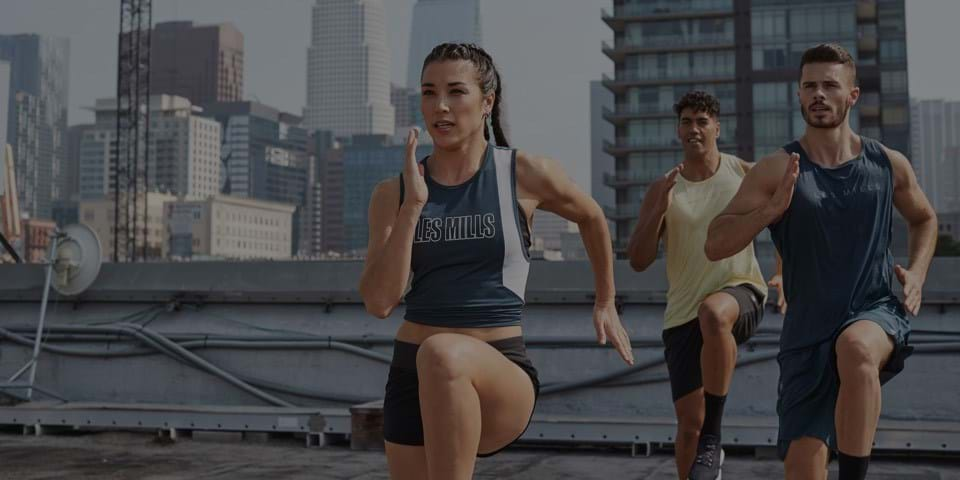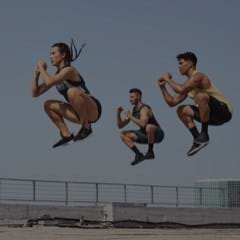We know from past research into core activation that integrated exercises, such as a hover, produce greater muscle activity compared to isolated exercises, such as a crunch. So, what happens to the core muscles when you add leg movements to this already difficult integrated core exercise? You massively increase muscle activity from hip to shoulder, without the need for any equipment.
But first, let’s establish whether you are ready for a new core challenge. Start by evaluating your success in the various hover options for 30-60 second intervals. If you can do a hover on your knees with your elbows under shoulders and hips square to the floor for 30-60 seconds, begin to build time on your toes.
Hover
If you can hold this basic hover on your toes for about a minute with unwavering form, you’re ready to explore the options …
One way to increase the challenge is to create instability through controlled movement by tapping your toes out to the side. This adaptation will increase your already warm core muscle activity by 10 percent at the shoulder (anterior deltoid), 30 percent in the front core (rectus abdominus), and 44 percent in your back hip (gluteus maximus). And if you want more of a challenge? Tap the foot further away from your body or increase the amount of air time between the lift and tap.
Hover with toe tap
Once you’ve mastered this controlled instability challenge, you can take the intensity to a whole new level by adding dynamic instability – a jump. Holding a hover while simultaneously jumping both legs out to the side and back in again puts much greater demand on your core. In order to keep the entire upper body segment square to the floor, shoulder activity increases by 52 percent, front core by 73 percent, and side core (external oblique) by 60 percent in comparison to the static hover. That is HOT!
These muscle activation findings were established when 20 individuals, who regularly do CXWORX™ classes, performed this series of hover options in random order. We placed surface, sticker electrodes on the primary core muscle groups from the shoulder to hip to evaluate the activity required to stay stable during multiple challenging options. We observed core activation increases before the movement begins in anticipation, and as it is occurring as a reaction. The magnitude of increase before and during depends upon the degree of difficulty.
How to make hovers work for you
- Build core strength by challenging yourself with hover options including controlled and dynamic movements.
- Master a static hover and then add these modifications in the following order: single arm or single leg tap, single arm with opposite leg tap, double leg jump.
Keen to learn some other variations?
We love hovers as the they are a great integrated training option that can be done without any equipment – and there are multiple modifications that you can adopt to continually overload the muscles. Check out some of our favorite variations below:
Hover with knee drop
A hover with knee drop is an excellent variation that enables you to check your technique on hip height. Hold the static hover and tap both knees to the floor for 8-10 repetitions. If it is difficult for you to reach your knees to the ground, your hips may be too high in the static hover.
Walking plank to hover
The walking hover to plank option is a great way to increase activity in the side abdominals (obliques) as well as the back of the arm (triceps). Start in the static hover, place one arm underneath the shoulder, press through the palm to begin lifting off the surface and repeat with the opposite arm into a plank. To lower down to the hover, reverse directions by placing a fist on the floor slightly in front of your shoulder. Use your triceps to control the movement down by rolling your forearm to the ground. The goal is to stay as straight as possible maintaining square hips and shoulders.
Looking for an intense core challenge? CXWORX is a scientifically-designed core workout that builds strength, stability and endurance in the muscles that support your core, including the abs, glutes and back.
FIND A WORKOUT WORK OUT ON DEMAND
Find out more about the difference between isolated and integrated core training, or check out the complete guide to ab exercise.
If you want more health and fitness inspiration simply sign up to Fit Planet and get the freshest insights and advice straight to your inbox.
Jinger S. Gottschall, Ph.D. earned her doctorate degree in integrative physiology from the University of Colorado at Boulder. She furthered her academic career as a postdoctoral fellow in neurophysiology at the Emory School of Medicine and as an Associate Professor at Penn State University. A passionate advocate for physical activity, Dr Gottschall has dedicated her career to finding programs that promote balanced, healthy lifestyle choices while delivering the results they promise.




